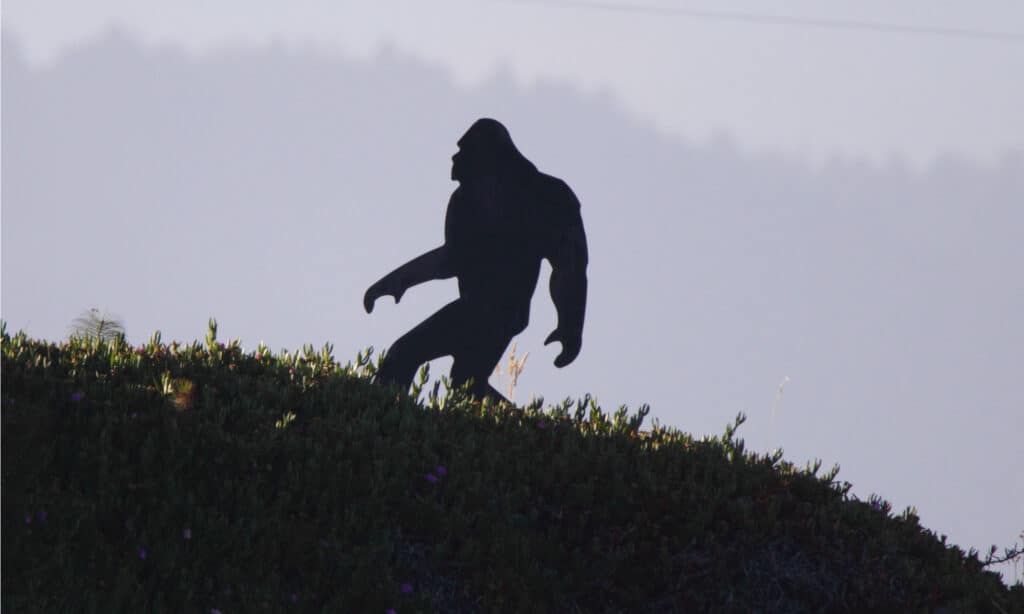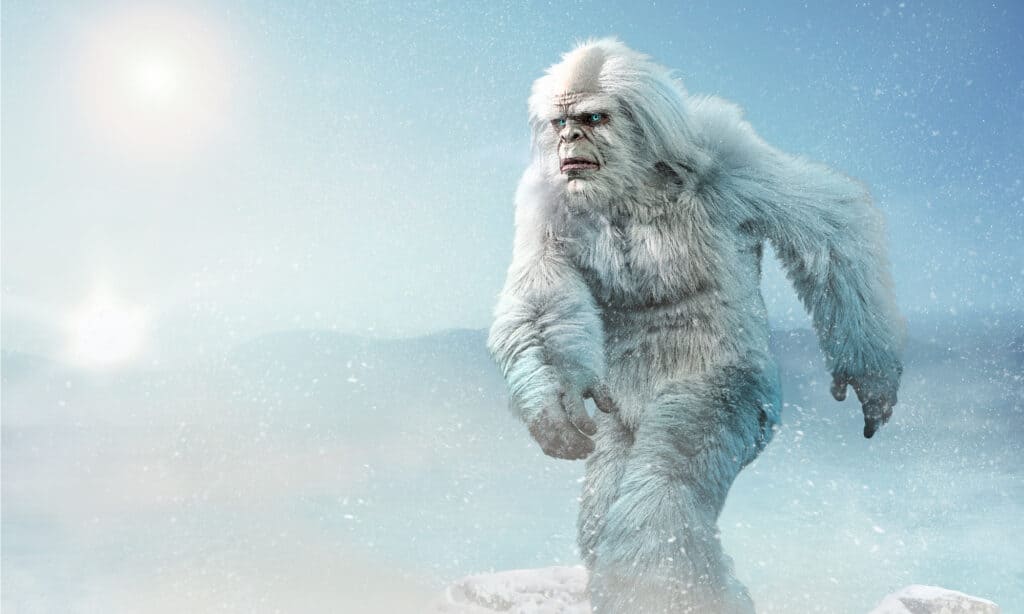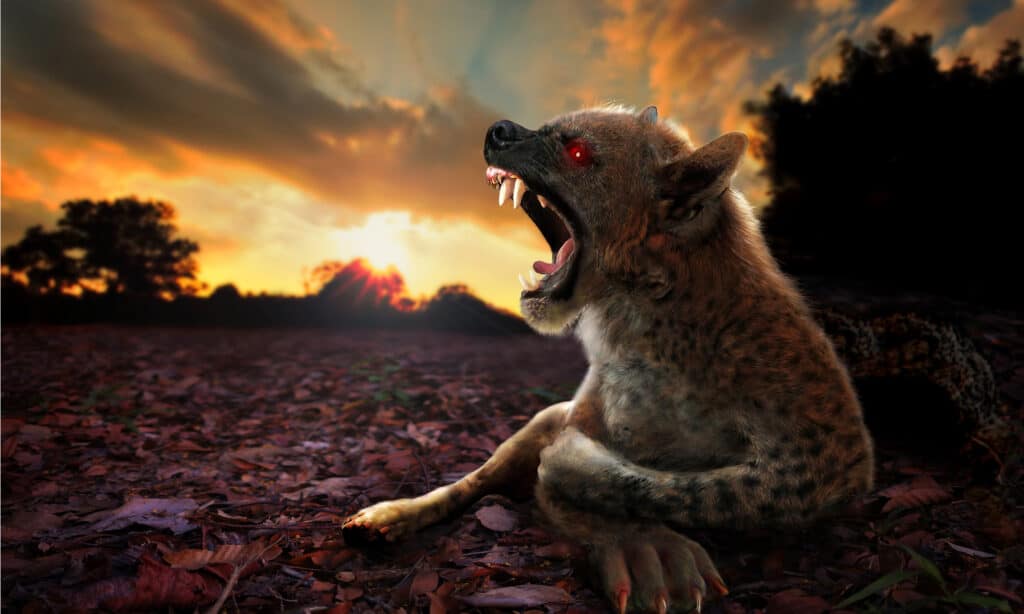Cryptids are animals that some people believe to exist somewhere out there. However, the mainstream scientific community doesn’t believe that these animals are real, or have ever been real. The study of cryptids is called cryptozoology. However, it differs from the study of usual animals.
Scientists who study living animals use the scientific method and established data sets to determine information about existing species. Cryptozoologists use methods like local folklore, urban legends, and anecdotal evidence. Many cryptozoology claims are therefore rejected by those with a more scientific mind. However, it is fun to think about whether or not bigfoot is real!
Examples of Cryptids
So, what are cryptids anyways? Here are some of the most popular examples:
The Loch Ness Monster

Loch Ness, which is known as a cryptid, is a famous creature many people believe is real. But is it?
©Yulia_Bogomolova/Shutterstock.com
Also called “Nessie,” tales of the Loch Ness Monster date back to around the year 600. The first recorded Loch Ness Monster story is that a man was swimming, got attacked by the monster, was dragged underwater, and died. A companion of his tried to swim to save him, and when the monster approached him, he made the sign of the cross and told the beast to stop. The monster stopped and seemed to be repelled by the sign of the cross. However, at this time, such stories that showed religious power were very common. People didn’t have a good understanding of science or biology, which led to misunderstandings about other animal sightings and other natural phenomena.
Starting in the late 1800s, sightings were recorded of a log-like creature that was seen wiggling and moving. In 1933, people started to report even more sightings and even started taking some photographs. Unfortunately, most of the photos were rather blurry and you could not quite tell what was in them. Some of these photos have been disproven. One was proven to be an otter when other negatives from the same photo set were found in the 1960s.
In 1934, a famous photograph was taken on the lake. It appears to show a dinosaur-like creature with a long neck, perhaps similar to a brachiosaurus. However, this photo was also later proven to be a hoax. The photographers had used a toy submarine and made a head and neck from putty.
More modern observations have been made. In 2011, Using sonar, sailors detected a large creature on radar several times. In one case, it was determined to be an algae bloom. In 2014, something was caught on Apple Maps cameras. However, it was much longer than the usual Nessie sightings at 98 feet long. Experts believe it is the wake of a boat.
Various expeditions and studies have also been performed to determine if the Loch Ness Monster is real. In 2003, the BBC sponsored a search to determine the question once and for all. They used sonar equipment on the lake for 2 weeks and came up short. They considered this the definitive answer to the question – the Loch Ness Monster is not real.
In 2016, researchers tested DNA from the lake to see if any reptilian DNA could be found. Scientists found a lot of eel DNA and said they could not rule out some kind of eel monster, but said that the more likely explanation is that there are small or normal-sized eels in the lake.
Science-minded folks have many different explanations for the strange sightings at Loch Ness. Some even suggest that a nearby circus allowing their elephants to bathe in the lake could be to blame for some funky photos. In other cases, people think it is a wake from birds, a large catfish, logs, waves, or an effect from seismic gas.
Bigfoot AKA Sasquatch

Many people have been in search of Sasquatch, also known as Bigfoot, which is a popular cryptid.
©Jean Faucett/Shutterstock.com
If you’ve ever been for a hike in North America, you may have been told to look out for Bigfoot. It is said to be a humanoid creature covered in fur from head to toe. Many cultures have a similar monster, and tales of a bigfoot-like creature in North America go back to indigenous peoples’ folklore. Bigfoot enthusiasts say the creature is between 6 and 15 feet tall, covered in fur, and looks somewhat like an ape with long arms.
There have also been findings of giant footprints that people have attributed to this creature’s lore, giving it the name, Bigfoot. In 1958, 16-inch human-like footprints were found on a construction site in Humbolt County, California. Workers in the area said they had seen similar footprints on other jobs. However, in 2002, the family of the original construction worker revealed he had been making the footprints as a hoax.
The other name, Sasquatch, comes from the Nlaka’pamux tribe of what is now British Columbia. Their word for it was Se’sxa, which became anglicized to Sasquatch.
Bigfoot folklore goes back at least 1,000 years, if not more. Petroglyphs from the Yokut tribe in central California depict the “hairy man,” a bigfoot-like creature. Indigenous tales of these larger-than-life creatures vary depending on the tribe and location. For example, some “bigfoots” ate livestock, while others had rock-like skin. Some could be summoned just by saying their name, so children were taught not to say it. Some versions were a bit more friendly. Tales of Bigfoot creatures from Spokane, WA suggest they were peaceful creatures but stole salmon from fishermen.
These days Bigfoot is a popular guy. There have been over 10,000 reported Bigfoot sightings in the United States. About 30% of these are located in the Pacific Northwest, with the rest being distributed rather evenly through the rest of the country. However, there are many potential explanations for all of the sightings and encounters with “Bigfoot.”
Bears can walk upright, especially when they are trying to see something, like a human, better. In low light or from a distance, a standing bear might resemble something else. Bears may also be responsible for some of the Bigfoot footprints that people have reported in recent years that have claws. For example, in 2007, a Bigfoot photo was identified as a bear with a bad case of mange. Poor guy!
Unfortunately, several people wearing furry clothes in the woods have been mistaken for Bigfoot and have gotten shot or injured. However, a lot of the Bigfoot evidence has been proven to be hoaxes created by people for fun, attention, or even money.
Yeti

Yeti, which is also known as the Abominable Snowman, is a cryptid many people believe lives in the Himalayas.
©Warpaint/Shutterstock.com
The legend of the Yeti is actually quite similar to Bigfoot, except that Yetis come from the Himalayan Mountains. Another name for a Yeti is an Abominable Snowman. Similar to the Sasquatch, a Yeti is a tall, ape-like creature covered in fur. It is usually described as having black, brown, or white fur. The Yeti comes from local folklore, as so many of these cryptids do.
The name Yeti comes from the Tibetan language. It means “rocky place bear.” The term Abominable Snowman comes from a 1921 report of a Mount Everest expedition. A wolf had left double tracks, leading to larger than usual footprints. The sherpas of the expedition said it must be from the “metoh-kangmi,” another Tibetan name for the creature that means “man bear snowman.” However, experts believe that in a mishap similar to the game of telephone, this term was mistranslated by a journalist, leading to the term Abominable Snowman.
Throughout the 1900s, there have been a few Yeti sightings, but more sightings of giant footprints in the snowy heights of the Himalayas attributed to the Yeti. There have also been expeditions to the mountain range to find footprints and other evidence of Yetis. However, most people have come up short.
Most studies on DNA evidence collected from possible Yetis have shown them to be the endangered Himalayan brown bear. Additionally, a study on Yeti footprints showed that they were most likely juvenile Asiatic bear footprints. When they are young, their “thumb” claw is facing outwards instead of inwards like adults, because they spend more time in trees. When they run on the ground and their hind pawprint goes over a forepaw print, it can resemble a large humanoid or ape footprint.
El Chupacabra

El Chupacabra is a crytid of Latin American origins.
©Alexlky/Shutterstock.com
This cryptid comes from Latin America, although sightings have been reported as far north as Maine. The name means goat sucker in Spanish. Unlike other cryptids, this one has fairly recent origins. In 1975 the small town of Moca in Puerto Rico experienced strange livestock killings. The livestock had all their blood drained out through small, circle-shaped cuts. However, it wasn’t until another similar incident in 1995 that the creature was given a name: El Chupacabra.
Most of the sightings and livestock deaths reported happen in Latin American countries like Argentina, Chile, or Peru. However, similar creatures have been reported in India.
There are two common descriptions of the Chupacabras. One type is said to hop like a kangaroo. This type looks like reptiles, with brown or green scaly skin. They may have spikes or quills on their back.
The other type is more like a hairless dog or coyote. They have deep eye sockets, a pronounced spinal ridge, and large fangs.
Most experts believe that these dog-like chupacabra sightings are actually wild dogs or coyotes with mange. They also believe that dogs can be responsible for the odd killings if they bite their prey and do not eat it.
Are Cryptids Real?
Most people would probably say that no, cryptids are not real. However, for some people, the pursuit of evidence of a cryptid like a Bigfoot or a Yeti is a fun hobby. It’s notable that some creatures that we know are real today started out as cryptids.
For example, no giant squid was ever captured on camera until 2001. However, we knew this creature existed because they have been washing up on shores, especially in New Zealand and Australia, for centuries. Even so, many people debated its existence. Another more recent cryptid that turned out to be real is the Komodo dragon. These 10-foot-long monitor lizards live on just a few Indonesian islands. Before their documentation in 1910, most people didn’t believe the reports of a “land crocodile” living on those islands. However, they are certainly real and still there today, although they are endangered.
So, it’s possible that some of these cryptid creatures may turn out to be real someday, but for most of these, all scientific signs point to the fact that they are not real. However, that doesn’t take away from their cultural significance, or in some cases, their spiritual importance.
Learn More
Cryptids may not be real, but these creatures once were! Learn about some of the most outrageous extinct animals that would certainly have legendary status if they were around today.
- The Largest Ever Feline Predator Was an 800lb Ice Age Monster
- Discover the “Monster Snake” 5X Bigger than an Anaconda!
- 7 Snakes That Went Extinct—#1 Could Kill a Lion if it Lived Today!
- Discover the “Rhinosaur” That Weighed 2 Tons and Had Gigantic Fangs
- Discover The 70 Foot Predator Eel That Once Ate Whales
- This “Terror Bird” Dinosaur Ran Faster Than Any Human
The photo featured at the top of this post is © Warpaint/Shutterstock.com
FAQs (Frequently Asked Questions)
What Are Cryptids?
Cryptids are animals that some people believe to exist somewhere out there. However, the mainstream scientific community doesn’t believe that these animals are real, or have ever been real.
Are Cryptids Real?
Most people would probably say that no, cryptids are not real. However, for some people, the pursuit of evidence of a cryptid like a Bigfoot or a Yeti is a fun hobby. It’s important to note that some creatures that we know are real today started out as cryptids.
Thank you for reading! Have some feedback for us? Contact the AZ Animals editorial team.







